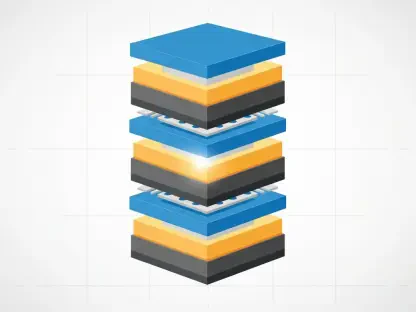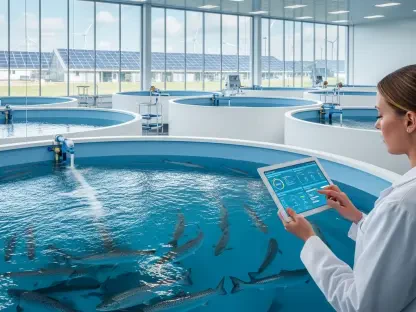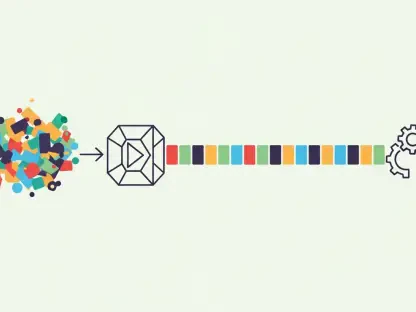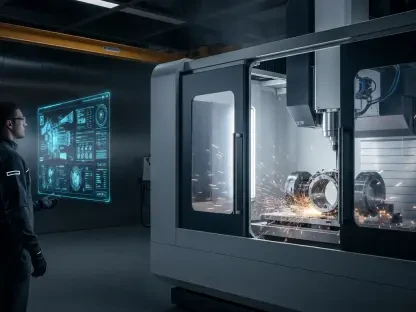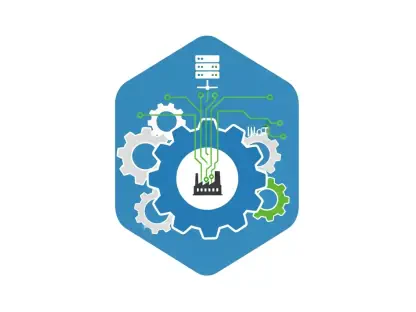In recent developments, OKI Circuit Technology, a key player in printed circuit boards (PCBs), has unveiled a new ultra-high-multilayer PCB production line at its Joetsu Plant in Niigata Prefecture, Japan. This move is set to address the growing demands for next-generation semiconductor manufacturing and testing equipment used in AI, data centers, and communication networks. The new production line, which became fully operational in July 2024, signifies a substantial upgrade in OKI’s manufacturing capabilities and strategic direction. By focusing on advanced technological capabilities, OKI aims to develop high-precision, high-definition PCBs that can cater to the evolving needs of semiconductor manufacturers. The company’s recent investments in production technologies reflect a strategic effort to remain at the forefront of the semiconductor industry.
Enhancing Manufacturing Capabilities for High-Precision PCBs
The Joetsu Plant has undergone significant expansion, increasing its manufacturing area by 3,300 square meters to 1.2 times its previous size. This growth includes the integration of new surface treatment lines capable of handling ultra-thin materials, additional direct imaging equipment, and the relocation of Automated Optical Inspection (AOI) equipment. These enhancements aim to streamline the production process, improve product quality, and boost production capacity by around 1.4 times the previous levels. The emphasis is on the technological advancements that enable the production of high-precision and high-definition PCBs. OKI’s new line supports a via pitch of 0.23 mm, which is crucial for developing advanced semiconductors with increased functionality, reduced size, lower power consumption, and greater capacity. This aligns perfectly with the industry’s direction toward semiconductors that handle large-volume data processing and high-speed transmission.
The enhancements implemented at the Joetsu Plant are not merely incremental changes but rather a comprehensive overhaul designed to meet stringent industry standards. By improving the line width accuracy and stabilizing transmission characteristics, OKI has significantly bolstered its capability to produce ultra-thin, ultra-high multilayer PCBs efficiently. The manufacturing process now incorporates cutting-edge surface treatment technologies that prevent oxidation and ensure material integrity, which is essential for maintaining performance in high-frequency applications. As semiconductors continue to become more complex, the precise engineering of PCBs becomes increasingly indispensable. OKI’s new production line represents a strategic investment that will enable the company to deliver the precision and reliability that next-generation semiconductor applications demand.
Meeting Industry Demands with Advanced Technology
As semiconductors evolve, there’s an increasing need for PCBs that feature narrow pitches and ultra-high multilayering. This demand is fueled by the need for more terminal pins and reduced pitches in advanced semiconductors, requiring PCBs to support these features with advanced materials and precise manufacturing techniques. OKI has risen to the challenge with its new high-precision drilling equipment, capable of creating ultra-fine holes with diameters of 0.10 mm or less. The introduction of such advanced manufacturing technologies not only positions OKI Circuit Technology at the forefront of the semiconductor PCB manufacturing industry but also ensures that the company can meet future industry demands. The improved line width accuracy and stabilization of transmission characteristics are critical for producing ultra-thin, ultra-high multilayer PCBs efficiently, reflecting OKI’s commitment to technological excellence.
Incorporation of high-precision drilling technology is crucial for addressing the intricate needs of modern semiconductors. These ultra-fine holes allow for denser circuitry, which is vital for applications that require high data throughput and low latency. Moreover, by leveraging advanced materials, such as high-performance substrates and conductive films, OKI ensures that its PCBs can withstand the rigors of high-speed data transmission and large-volume data processing. The precise engineering required for these advanced PCBs is complemented by OKI’s new production capabilities, which include automated inspection systems to guarantee quality and consistency. The strategic integration of these technologies not only boosts production efficiency but also enhances the overall reliability of the PCBs, making them suitable for critical applications in AI, data centers, and telecommunications.
Strategic Investments and Expanding Production Capacity
The expansion of the Joetsu Plant and the incorporation of state-of-the-art production equipment underline OKI’s strategic investments aimed at enhancing their production capabilities. By expanding the manufacturing area and integrating cutting-edge technology, OKI is poised to significantly increase its production capacity and improve the quality of its products. The upgrade is a testament to the company’s dedication to meeting the evolving needs of the semiconductor industry and other high-tech sectors. A key element of this development is OKI’s focus on its Electronics Manufacturing Services (EMS) business. By providing a comprehensive Mono-zukuri service, which covers everything from design to production and reliability testing, OKI offers a one-stop solution to its customers. This strategic orientation enhances OKI’s competitive edge in high-demand sectors such as semiconductors, aerospace, defense, robotics, and next-generation communications.
OKI’s holistic approach to manufacturing encompasses both technological and operational advancements, positioning the company as a versatile and reliable partner for various industrial applications. The integration of advanced equipment, such as direct imaging systems and automated optical inspection units, ensures that the PCB production process is both efficient and precise. By maintaining stringent quality control measures throughout the manufacturing process, OKI guarantees the high performance and durability of its products. Moreover, the expanded production capacity allows the company to meet increased demand without compromising on quality. This strategic focus on scalability and reliability underscores OKI’s commitment to driving innovation in the semiconductor industry while maintaining high standards of product excellence.
Driving Future Industry Standards
As semiconductors advance, there’s rising demand for PCBs with narrow pitches and ultra-high multilayering to accommodate more terminal pins and reduced pitches. This calls for PCBs made with advanced materials and precise manufacturing. OKI has met this need with its new high-precision drilling equipment, capable of creating ultra-fine holes with diameters as small as 0.10 mm. This advanced technology places OKI Circuit Technology at the forefront of the semiconductor PCB manufacturing industry, positioning the company to meet future demands. Enhanced line width accuracy and stabilized transmission characteristics are essential for efficiently producing ultra-thin, ultra-high multilayer PCBs, reflecting OKI’s commitment to technological innovation.
The inclusion of high-precision drilling technology is vital for modern semiconductors’ intricate requirements. These ultra-fine holes enable denser circuitry, crucial for high data throughput and low latency applications. By utilizing advanced materials like high-performance substrates and conductive films, OKI ensures its PCBs can handle high-speed data and large-volume processing. OKI’s new production capabilities, including automated inspection systems, guarantee quality and consistency. This strategic integration enhances production efficiency and PCB reliability, making them ideal for AI, data centers, and telecommunications.

